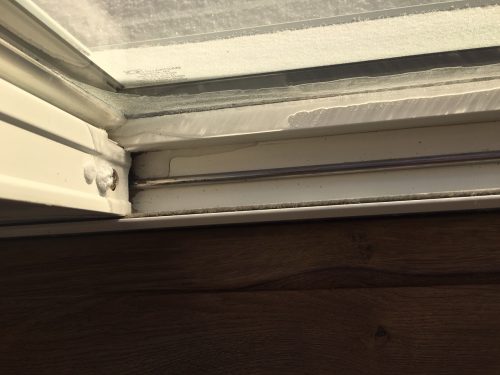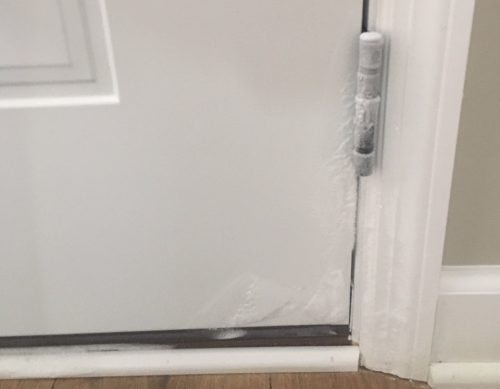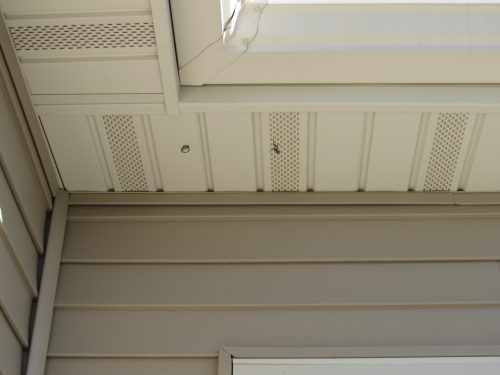Should you get a home inspection on a new construction home?
When a home is new, everything should be perfect, right? The builder will follow all of the manufacturer’s instructions, right? All of the construction workers will do things properly, they won’t take shortcuts, and the city inspectors will double-check to make sure everything is perfect.
Huh. When I say it that way, it sounds kind of naive, doesn’t it?
But even if stuff isn’t right, the builder covers the home with a one-year warranty. You’ll discover any mistakes within the first year of construction, and the builder will fix it… right? Construction defects couldn’t possibly have any long-lasting effects on the durability of a new home… right? It’s new!
Yeah, that’s not true either.
The reality with new homes
I’ve blogged about new construction defects many times, with my last post on new construction inspections including over 45 photos of crazy new-construction defects. My mega-post from the previous year had over 150 photos of new construction defects. I even teach a one-hour class to real estate agents on just this topic, stressing the importance of new construction home inspections. I also teach a two-hour version of that class to home inspectors.
For this post, I’d like to share a story about the most recent new-construction home inspection that I did. Well, technically, this was a one-year warranty inspection. The homeowner didn’t get a home inspection at purchase time because the builder’s rep had convinced her of all the myths listed above.
After living in the home for just under a year, this particular homeowner had enough funky things show up that she began to lose faith in her builder, so she hired me to inspect her home before her one-year warranty expired.
The Homeowner’s Story
I began the inspection the same way that I start every inspection; by asking questions and listening. This homeowner, we’ll call her Sarah, had dealt with unusual amounts of frost and ice on all of her door hinges and latching hardware for the exterior doors. She showed me photos of the frost and was generous enough to let me use them for this blog post.
The owner assumed that the seals on the doors weren’t good, and the builder agreed to re-do the weatherstripping.
I asked the homeowner about her whole-house humidifier; she kept it running during the winter, but not at a high enough setting to justify all of the frost. I said I’d try to get that figured out.
Sarah also told me that her home felt ‘stuffy’ during the winter. She was concerned that there was a problem with her energy recovery ventilator (ERV) because her filters never got dirty. Sarah brought this up to the builder, who sent the HVAC installer out to check on the installation. The HVAC installer assured Sarah that everything was properly installed, and everything was working properly. He even took the time to go outside with her and point out both the intake and exhaust terminals.
My Inspection
I started my inspection by turning on all of the bathroom exhaust fans, the clothes dryer, the kitchen exhaust fan, and the ERV to high.
Next, I headed outside to inspect the exterior. I accounted for the bath fan exhausts, the dryer exhaust, and the kitchen exhaust, but I couldn’t find the terminals for the ERV, nor for the make-up air intake duct.
Because I had already done several one-year warranty inspections in this neighborhood, knew exactly where the ERV ducts should be located, which was at the soffit at the back of the house. Also, it looked like the builder knew where they were supposed to go because there were markings at the soffit.
I put my ladder up to this area and put my ear to the soffit to make sure that the builder hadn’t simply forgotten to cut out the holes. No such luck. I couldn’t hear a thing.
I went back inside and scanned the ERV intake and the make-up air intake, with all of the exhaust appliances still running full blast. This was a 40-degree day, so the interior of the make-up air duct should have been close to 40-degrees, but it was exactly the same temperature as the rest of the room. This clearly indicated that the ducts for the ERV and make-up air intakes were not run to the exterior.
Conclusion
None of the ducts had been run to the exterior, so make-up air for the exhaust appliances had to leak into the home through unintended openings, such as those around the doors. There was no problem with the weatherstripping at the doors. Frost accumulated throughout the winter because there was no make-up air duct, and this was exacerbated by the fact that the ERV was doing squat all winter long.
For every cubic foot of indoor air that leaves the home, one cubic foot of outdoor air replaces it. This is Building Science 101.
The homeowner complained to the builder about these issues, and the builder’s HVAC technician made this single, retired woman think that she was going crazy. When he pointed out the ERV intake and exhaust, he was actually pointing out the bath fan terminal and the clothes dryer terminal.
D’oh.
The builder needs to correct the ERV installation, along with the make-up air duct. That will solve all of the homeowner’s woes in one fell swoop.
The takeaway
There is value in having new homes inspected, and the best time to have this done is before you purchase the home. It’s far more convenient to deal with problems before you move in. The average homeowner doesn’t have the knowledge to know when things aren’t installed properly, and many construction workers don’t either. Don’t skip the home inspection; it’s a very small investment. In next week’s blog post, I’ll discuss the three types of new construction inspections; pre-drywall, final inspection, and one-year warranty inspections.





Tim Copeland
June 18, 2019, 6:17 am
wow!